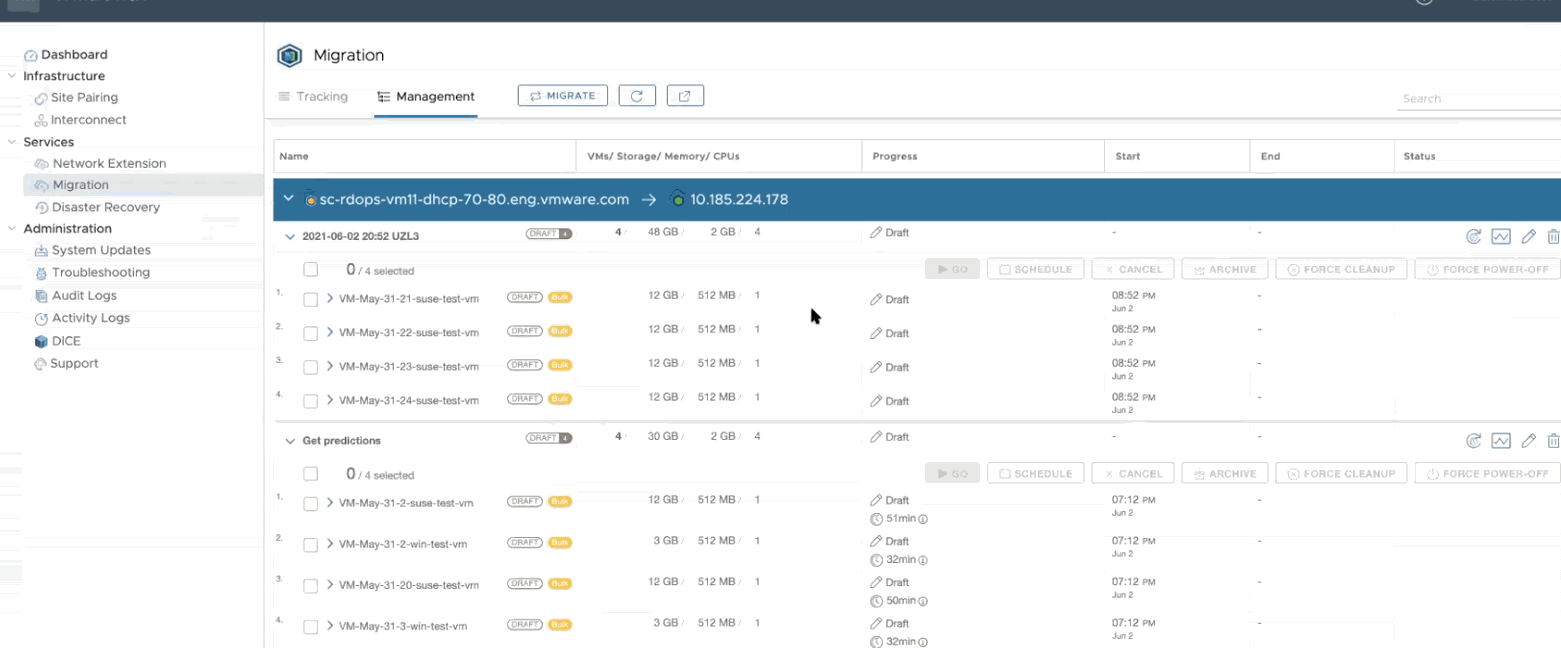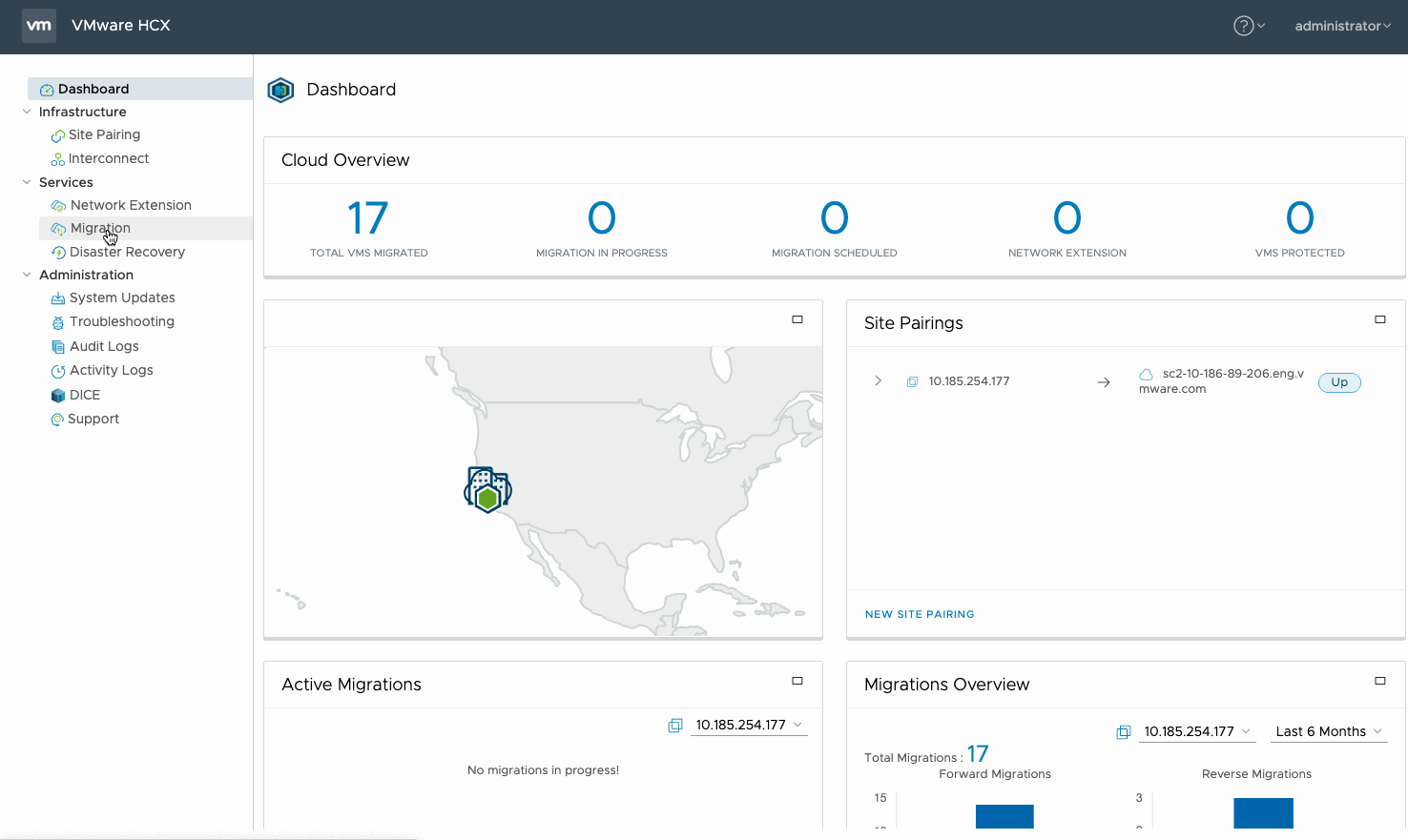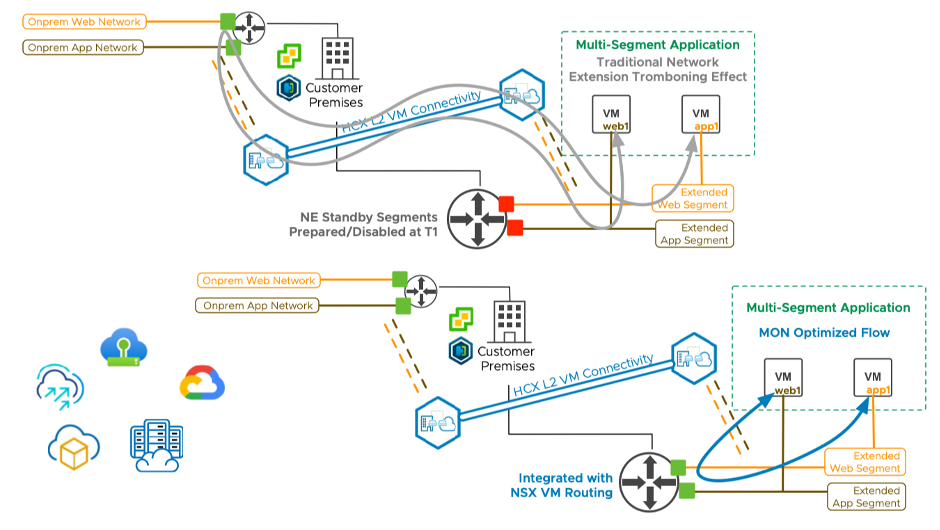VMware HCX is a crucial component of the modernization journey for many VMware customers as they transform their data centers into SDDCs, both on-premises and in the public cloud. HCX, an application mobility platform, simplifies application migration, workload rebalancing, and business continuity across data centers and clouds, and enables large-scale migration of workloads to modern environments.
With the HCX 4.0 release, we rolled out some major updates. Now, the journey continues steadily forward with the release of HCX 4.1. Let’s dive in and see what’s new.
What’s New
Migrations Estimations: Predictive Estimations for Bulk Migrations
One key capability that was launched in HCX 4.0 was Migration Estimation — which provides real-time predictions for bulk migrations. With the HCX 4.1 release, customers will see a more accurate predictive estimate for bulk migrations in draft stage before wave execution.

Seed Checkpoint for Bulk Migration
In the past, failed replication-based migrations, like bulk migrations with HCX, automatically executed a cleanup process, which would lead to a total loss of replicated data. To the customer, this entailed losing all migration progress, while for larger VM profiles this meant the loss of many days of replication progress.
The seed checkpoint feature provides recoverable migration progress with checkpoint seed data; that is, users have the option to retain replica disks at the target datastore if a migration is failed or canceled. Seed checkpoints enable HCX to reuse the disks on the target for seeding replication data, avoiding the need to transfer all the data again.
The feature can be enabled by selecting the checkbox in Migration Wizard per VM selected, as shown in the screen capture below:

General Availability of Mobility Optimized Networking (MON)
For VMs migrated using VMware HCX from a source location to a private or public cloud destination, this capability enables cloud-side VMs on the HCX extended network to route traffic optimally through the cloud-side first-hop gateway — instead of being routed through the source environment router. Mobility Optimized Networking helps customers avoid a hairpin or trombone effect. Policy routes allow control over which traffic is routed locally using the cloud gateway versus traffic that goes out through the source gateway.
MON was released as EA in HCX release R140 and received great customer feedback. With HCX 4.1 we’re happy to announce the GA of this feature.
For more details, refer to the blog announcement.

Increased VMware HCX Product Maximums
Finally, with HCX 4.1, VMware has updated tested config max deployments with higher limits, which will enable much more scalable deployments for customers.
| Metric | Old Tested limit | New supported limit |
| HCX Network Extension Appliances | 100 | 128 |
| Service Mesh Appliances | 125 | 192 |
| Service Meshes per deployment | 25 | 64 |
| OSAM scale out | 50 Disks in one SDR | 200 Disks (50 x 4SDR) |
| Mobility Agent Update
Machines disk size |
1 TB | 24 TB |
| Maximum VM Mem for HCX vMotion / RAV | 128 vCPU | 768vCPU |
With the hyper-growth of distributed environments and the increased need for cloud-like agility and flexibility everywhere, HCX is on an unprecedented journey. More than ever, organizations require movement and rebalancing of workloads to ensure availability, performance, security, and cost optimization, and HCX is delivering on its promise.
Check out the following HCX Resources for more information:
HCX 4.1 Software Download | Release Notes
HCX 4.0 Blog | What’s New in VMware HCX 4.0 lightboard video


Comments
0 Comments have been added so far